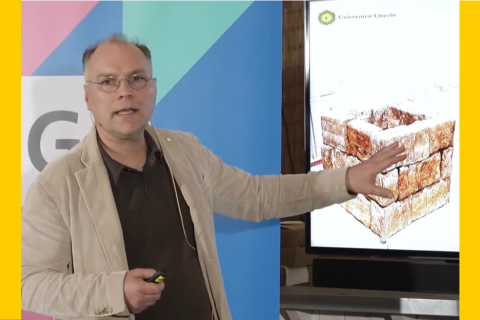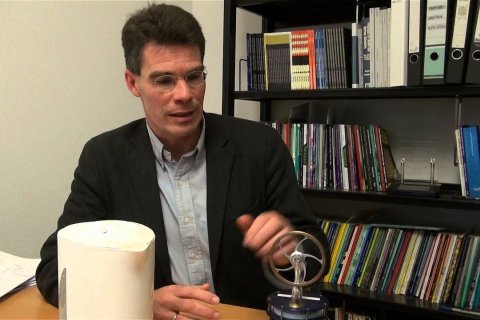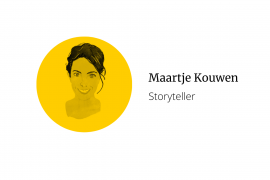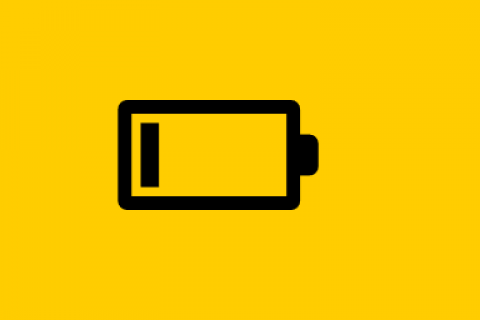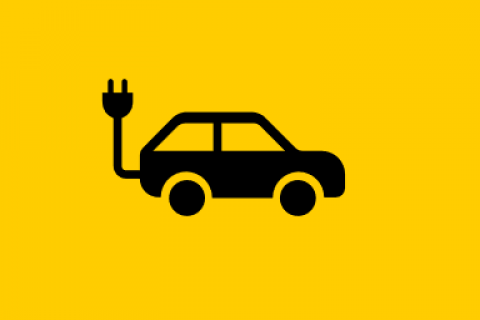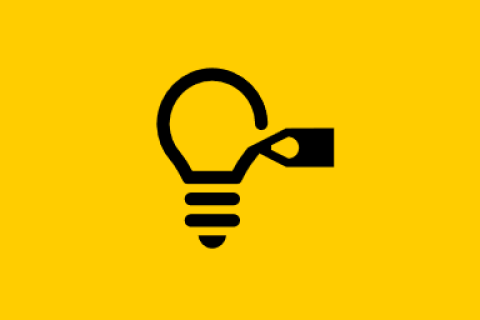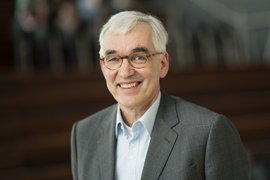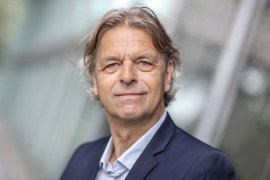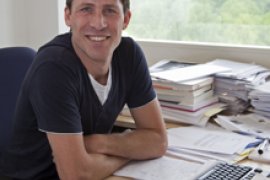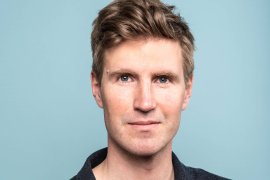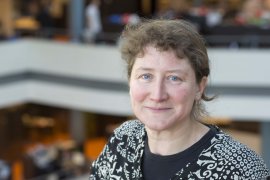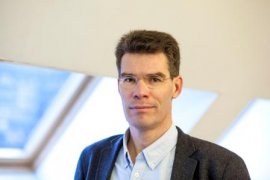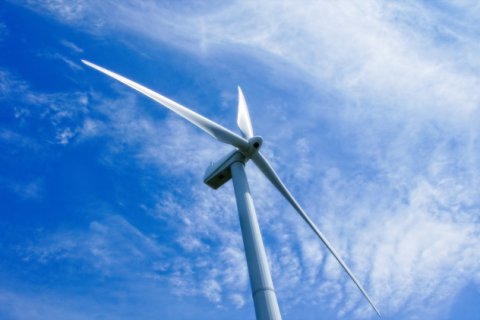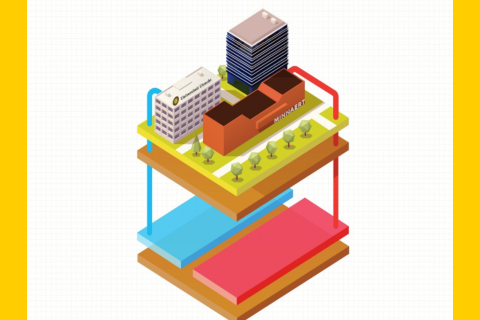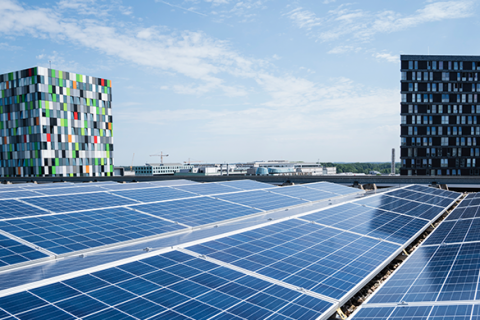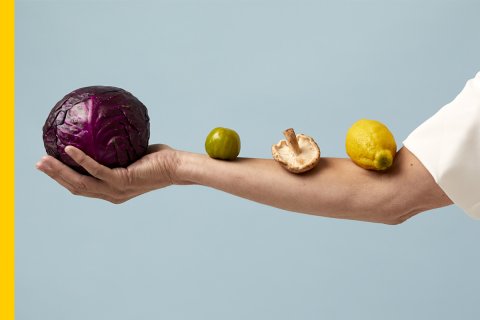Where will your energy come from 30 years from now? Cooking with gas is no longer an option, coal and cement are long gone. What would our homes look like then? Your house might disguise the fact that the walls are made of fungi, that the heating system uses a heat pump and that you cook on electricity generated by your own solar panels and stored in your electric car. But in the world of energy supply and generation, nothing is ever the same again. We are on the eve of a true revolution. From electricity to heat, storage and transport: get ready for energy 2.0.
Energy of the future
Estimated reading time: 14 minutes

Imagine waking up in 2050. Your bedside light will fade on when it’s time to get up, the coffee machine will be running before you get downstairs and the garden sprinkler will start as soon as the plants are dry. As you drive away in your electric car, the heating in the house will switch off automatically and the robot hoover starts cleaning the floors. This is no longer a futuristic view: the future is now. But all of these innovations have one thing in common: they require energy. And it is precisely in this area where dramatic changes will be needed in the coming years in order to generate and use new energy. How do we ensure that everyone has enough energy? That is what we are working on now, for the future.
There is still a lot to be done, because 80 per cent of our energy still comes from oil, coal and gas.
On our way
Energy transition. The word is everywhere. But what is it really? What will you notice in your home? And is it really coming? We are in fact already in the midst of it. But it is not happening as quickly as scientists would like. And that is not because we are running out of fossil fuels, as used to be the main concern. The need for new forms of energy is much more urgent: our changing climate. And your family car could well have a more positive impact on the transition than we would have imagined.
In order to combat further global warming, countries worldwide have committed to reducing greenhouse gas emissions in the Paris Agreement. The Dutch translation of this is: to roughly halve our greenhouse gas emissions by 2030, and reduce emissions to zero by 2050. "A lot has to be done to achieve this, because 80 per cent of our energy still comes from oil, coal and gas. Just like in the 1970s," says Gert Jan Kramer, Professor of Sustainable Energy Supply Systems and head of the Utrecht hub Energy Transition.
"Energy transition means two things: renewable energy becoming the dominant energy supply, and bringing emissions to zero," explains the Utrecht energy professor. Those are indeed two different ambitions: "You can also continue to use fossil fuels, and capture and store the CO2. Or you could use nuclear power, for example. But that is not renewable."
So, clean and renewable. That translates mainly into solar and wind energy. Sounds simple, but it will require a radical change, says Kramer. "A change in land use (because where do you put all those windmills and solar panels), market forces (after all, the sun and the wind belong to everyone) and electrification (because not everything can run on electricity yet)." The latter – electricity as the only source of energy – also directly affects its user. Which means you. Because cooking with gas, heating your house with coal and driving a car with petrol no longer fits into that picture of the future. To what extent is your heating, kitchen and car already future-proof?
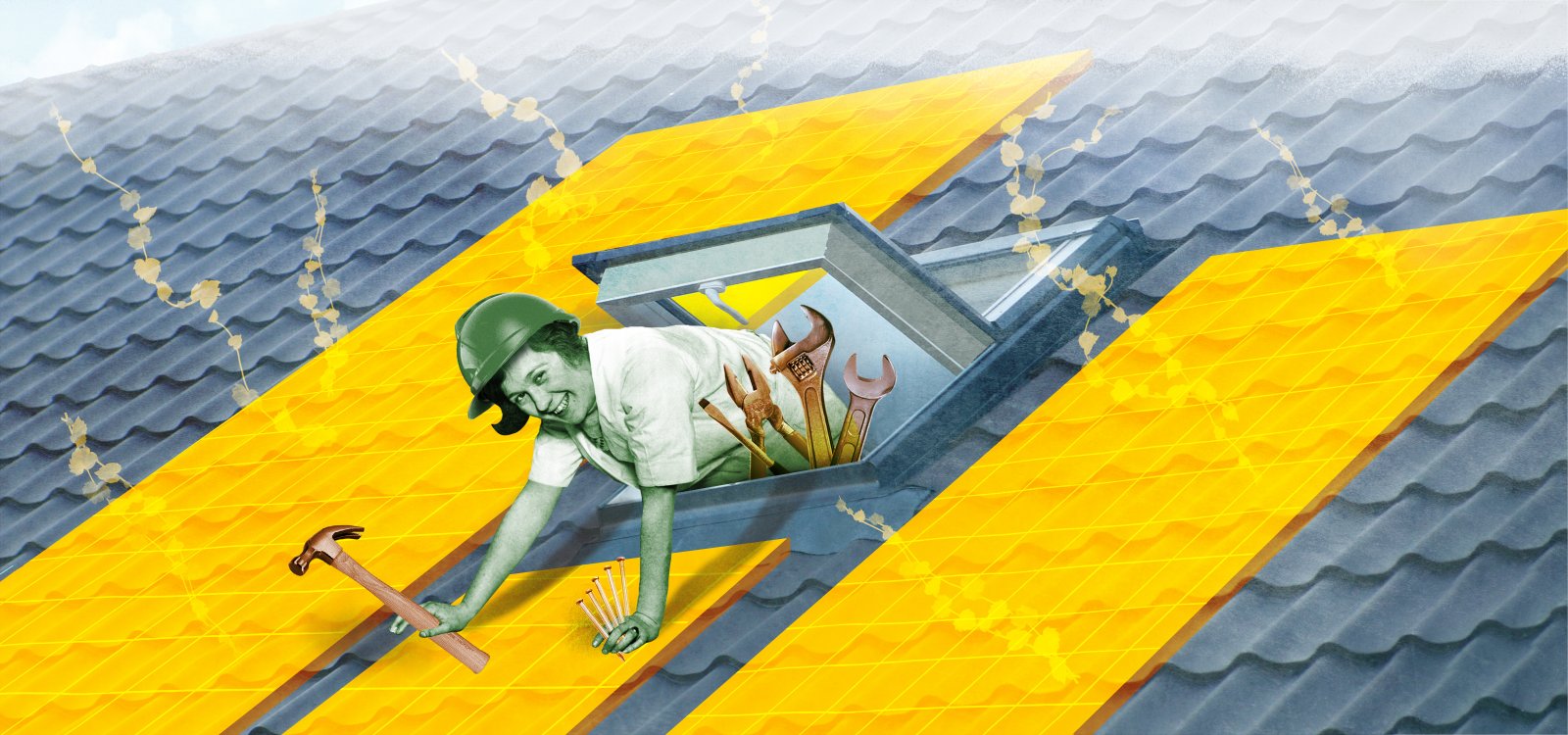
In my backyard please
Sustainable energy generation used to be a matter of ‘not-in-my-backyard’. But today we increasingly do want it in our own backyard, or rather: on our own roof. "Ultimate democracy", is what solar energy professor Wilfried van Sark calls it: generating your own energy. Resistance to solar energy is decreasing, just as the options become more aesthetically pleasing. "You now see many black solar panels, which are already less conspicuous. And there are roof tiles available with solar cells in them. These days we can even place images, such as a brick pattern, between the glass and the solar cells. We are also working on solar cells in windows, using nanocrystals. Aesthetically and technically we can do more and more," says Van Sark, who has already made 'stained glass' solar panels. "I expect that roof tiles in their current form will disappear, and there will be a new type of roof construction with integrated solar cells."
Energy-neutral houses are no longer an exception, we will increasingly move towards energy-producing houses
Solar energy is expected to be the dominant energy source, along with wind energy. But to make that happen, we still have to install a lot of solar panels. "We need to make good use of all the roofs. So even on the north side or in partial shade. Solar panels cost so little nowadays that it will be cost-efficient in a just few years, even with lower yields per panel. If we cover all the roofs, we will have enough energy for all households." Energy-neutral houses are no longer an exception; in fact, Van Sark expects that we will increasingly move towards energy-producing houses and flats.
The rumour that the production of solar panels would be so polluting that it would not outweigh the benefits of generated energy and CO2 savings is a myth, by the way, which Van Sark has already busted many times. "It's bullshit," says Van Sark. "Yes, CO2 is released in production and it requires energy, but the break-even point is less than two years.”
Compared to fossil fuels, renewable energy presents a new challenge though: solar energy is less predictable and varies considerably, resulting in significant peaks and troughs in energy generation. The combination with wind energy solves this to some extent: sunshine is plentiful in spring and summer; in autumn and winter the wind blows a little harder. But we should make more and better use of the peak moments when plenty of electricity is generated, by using energy precisely at those moments and storing the surplus to be used later.
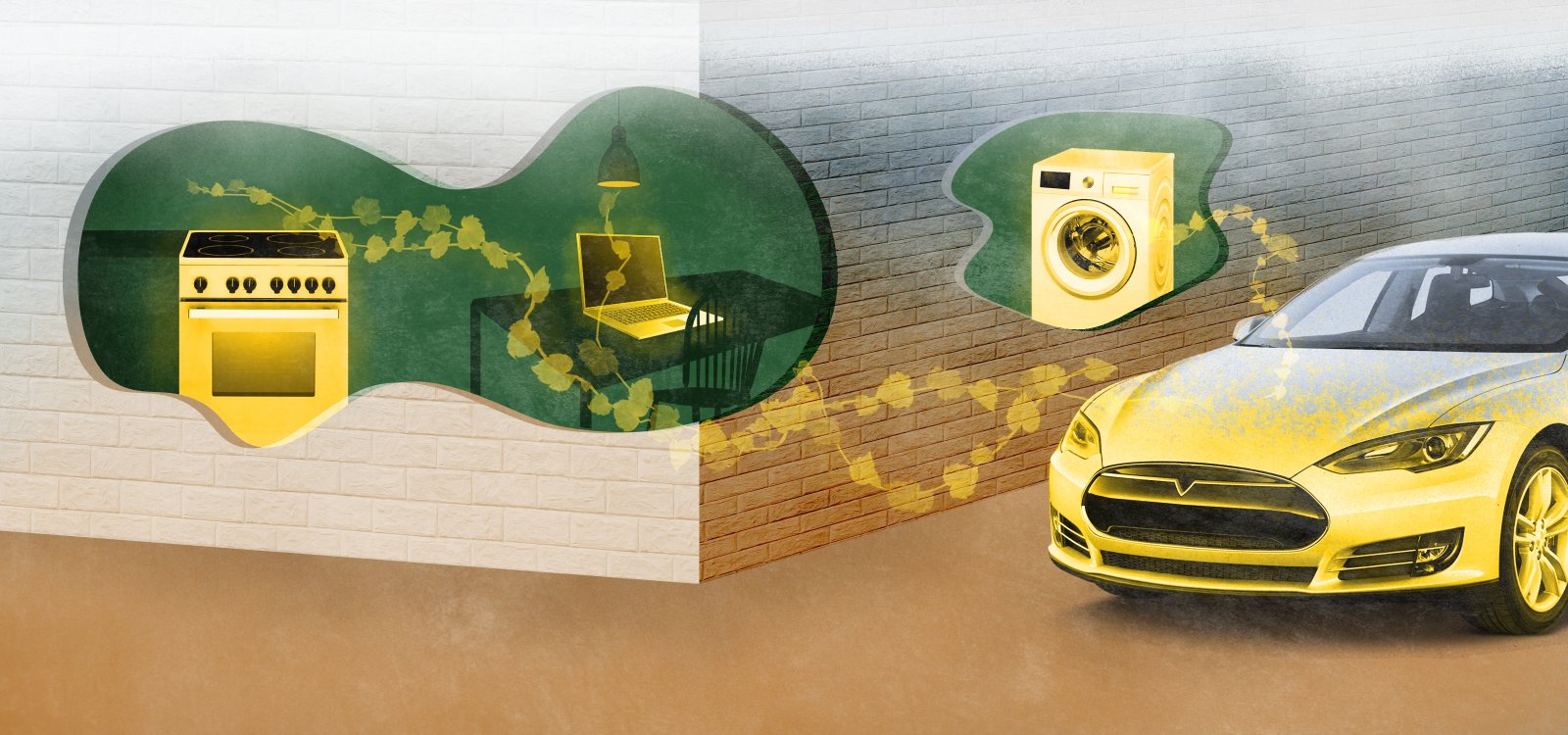
Beyond shame of flying
Whereas cars are currently part of the emission problem, they may soon become part of the solution. Not only are electric cars the ideal way to bypass the use of fossil fuels, they can also store electricity at peak times and return it when there is a shortage. In the process, they can compensate for fluctuations and avoid having to activate a polluting power station to generate additional electricity on cloudy days. The electric car therefore has a surprising dual role to play in the energy transition.
It all starts with smart charging, explains energy scientist Wouter Schram: "That means not plugging in and starting to charge straight away, but using an IT component to optimise the moment of charging at times when CO2 emissions are lowest." For example, you can set your car to charge only when there is plenty of sun and wind. This also helps to prevent the electricity grid from becoming overloaded; the growing number of private solar panels is causing peak times in the electricity network. "At the moment, homeowners still receive money when they sell their electricity to the grid. But this so-called net metering regulation is being phased out as the government encourages you to use and store your self-generated energy as smartly as possible."
A car battery can power your house for more than a week
This can be done in collective neighbourhood batteries, for example, and thus in the battery of your electric car. "When your car battery supplies electricity back to your house, it can power your house for more than a week,” says Schram. “If we only drove electric vehicles in the Netherlands, and if we optimised the charging process, on average it would contribute more to the peak demand than all of the Netherlands’ coal-powered plants combined. In time, second-hand car batteries could also serve as home batteries to reduce CO2 production."
There are still some hurdles to cross, however: "Not all electric cars can deliver back to the grid at the moment, and not all charging stations are suitable for two-way traffic. We are also currently investigating the extent to which car owners are prepared to use their cars as a buffer. And of course there will be some loss during conversion." At the Utrecht Science Park, experiments are taking place with Smart Solar Charging with bi-directional charging plazas and carports covered with solar panels.
Schram is optimistic about the dual role of electric cars. "Electric driving is a concrete way of contributing something. The shame of flying is turning into shame of driving; electric cars make people feel good and are becoming more and more popular. Smart charging is definitely going to happen, and I think there is a good chance that the electric car will also increasingly serve as a buffer in the energy supply."
Swiss Army knife
When you hear 'energy transition', you often hear 'hydrogen' mentioned in the same breath. ‘Green' hydrogen is created by splitting water with the help of sustainably generated electricity. The hydrogen obtained is like a Swiss Army knife that can be used for all sorts of applications. "Hydrogen is the only fuel that does not emit CO2 when burned. You can also use hydrogen to replace fossil sources for the production of fertilisers, liquid fuels and chemical building blocks. We can also store energy in the form of hydrogen, and convert it back into electricity at a later date." Hydrogen will play a major role in the energy transition, says Petra de Jongh, Professor of Catalysis and Materials for Sustainable Energy.
Due to the variability of solar and wind energy, storage in particular is becoming an essential component in the transition. "Energy can also be stored in batteries, but these are unsuitable for long distances and high power, such as in aircraft, trucks and the chemical industry, because the battery required would be too large. In the energy transition, green hydrogen will first replace fossil hydrogen – produced with natural gas – in industry and will then also play an important role in energy storage."
But no hydrogen will flow through your gas pipes to heat your home or cook on, and running your city car on hydrogen is not the future either, says De Jongh. "If you can use electricity directly, then you should always do that, it's much more economical. If you want to drive on hydrogen, you first have to use electricity to make hydrogen, which then again provides electricity in your car. That wastes a lot of energy in the process."
Hydrogen-powered vehicles are less practical as a passenger cars now that you can drive just fine on a battery, says De Jongh. "We used to think that batteries wouldn’t be light enough for that, but we never could have predicted that the development would go so quickly. We are now working on the next step: batteries that no longer contain any liquid, making them even safer and lighter. For houses and cars, that is a much more logical application than hydrogen."
The big rebuild
Simply having enough electricity doesn’t get us quite where we need to be, though. Can you already cook or heat your home using only electricity? This change is imminent for many homes, because by 2050 the Netherlands aims to ‘get rid of gas'. "This is not because gas is so polluting – actually, natural gas is the cleanest of all the fossil fuels. It has more to do with the large numbers involved: with 7 million homes and 1 million other buildings, switching away from natural gas will make quite a difference in the use of fossil fuels and CO2 emissions," says Robert Harmsen, researcher in Energy and Resources at Utrecht University.
Getting rid of gas means tackling more than 600 homes a day. We barely manage that on an annual basis
If we are to be ready for this by 2050, then we will definitely have to pick up the pace. "Do the math: 7 million homes in 30 years' time means tackling more than 600 homes a day. We barely manage that on an annual basis. What's more, it requires many professionals: plumbers, electricians, insulation experts. They are not readily available," says Harmsen, who researches gas-free pilot neighbourhoods and advises on the most convenient approach, for example per type of house rather than per neighbourhood. "The task is enormous and is growing by the day.”
The transition involves more than simply flipping a switch. The most important step is to insulate the house from top to bottom. An electric heat pump cannot heat the water in the heating system as much as a central heating boiler can, so without good insulation the house simply won’t get warm. Poor insulation also wastes a lot of the heat generated, resulting in a higher energy bill. It's like running a bath with the stopper not (properly) in place.
"A point of concern is that the gas-free ambition is taking the discussion about the energy transition hostage. And there is still a lot of scepticism about eliminating natural gas entirely," says Harmsen. "It would be a completely different story if politicians were to say: we are going to insulate, with an improvement in living comfort, a healthier home and a lower energy bill as a result. That is an ambition that no one can oppose.”
Behind the front door
Packaging the energy transition properly and getting people on board is vital. The transition has an impact behind people's front doors, and not everyone is jumping at the chance. The result: popular resistance. "The energy transition is being imposed upon you. As a consumer, it is very difficult to influence it; there is no opportunity to enter into discussion or to participate," says legal expert and political scientist Sanne Akerboom, who is currently researching citizen participation and action perspectives, as well as resistance to the energy transition.
We are only at the beginning of the energy transition, and resistance is growing
“Things have to change,” says Akerboom. “We are only at the beginning of the energy transition, and resistance is growing. The most important conditions for citizen participation are: being involved in decision-making at an early stage, entering into a dialogue and being open to alternatives. At the moment, it is often the case that if and when citizens are allowed to have their say, the most important decisions have already been made and all the ideas put forward are rejected."
Moreover, says Akerboom, it is important to acknowledge that the energy transition can also have negative consequences. For example, for those living near wind turbines, for tenants without any prospects for action, or for vulnerable households. "By looking at the effects on different groups in advance, we can prevent negative consequences sooner and better." After all, if the energy transition is not experienced as fair, it will not be readily accepted either.
According to Akerboom, a different definition of success could help to get citizens on board with the energy transition: "We currently measure success in terms of CO2 savings and cost-effectiveness. We could also look at added value: how do we make houses more liveable now and in thirty years' time, by not only insulating houses better but also cooling and ventilating them."
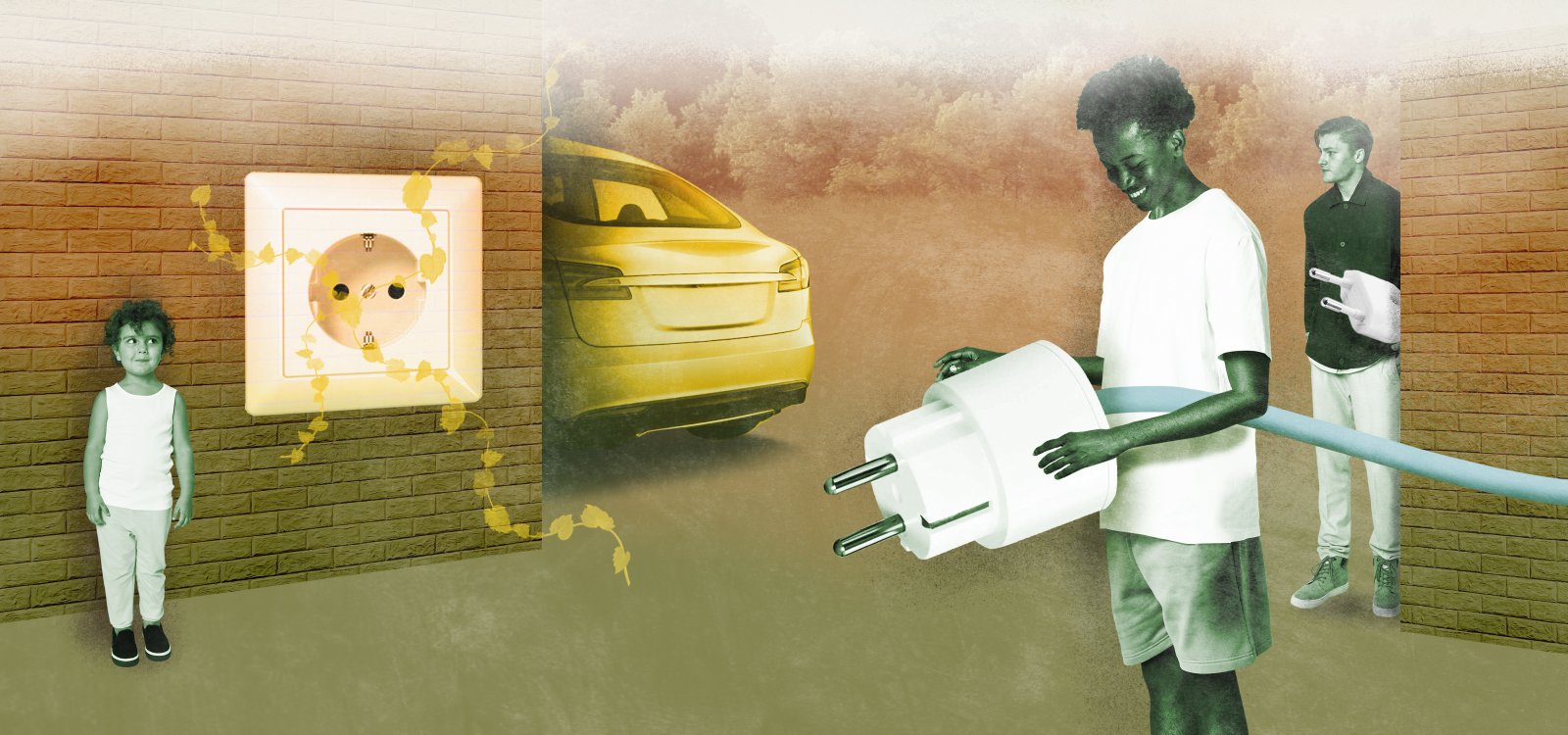
The social risk of sustainability
Technological development has long ceased to be the challenge; it is now in fact primarily a social issue, in which the fair distribution of energy cannot be taken for granted. Solar energy can brighten some people’s lives, but it can cast a long shadow over others’. Because not everyone has their own roof to put solar panels on, the necessary financial resources or their own parking space where an electric car can serve as a home battery – think about people living in flats and social housing. What about them?
There is a danger that the energy transition will create greater inequality. "Rental properties, for example, are often poorly insulated, so heating costs are high. When conventional energy becomes more expensive, that bill will only get higher," warns Akerboom. Energy poverty is already a serious problem, says Jesse Hoffman, who researches the social impact of the energy transition: "It means people are spending more than 10 percent of their income on energy; in the Netherlands that applies to 600,000 to 800,000 people."
Energy poverty is already a serious problem
That risk is all the greater because of the places where energy transition policies are focused, says Hoffman: "Natural gas-free pilot projects often take place in neighbourhoods that are already seen as vulnerable, such as Utrecht Overvecht and Rotterdam Zuid, where there is a lot of housing corporation ownership and it is easy to make big changes," says Hoffman. "The idea among policymakers is that adapting the infrastructure is also an excellent opportunity to do something about employment and public space, which leads to social improvement. Or by transferring property to local citizens' cooperatives, which creates new opportunities for community building and involvement."
But the reality is more complicated, says Hoffman. "Because it's not easy to actually link the energy task with the social task, if a flat has to be rebuilt and the street is opened up. We advise policymakers how to come up with ways to make this connection in an active and inclusive manner together with residents. We believe that 'futuring' can help: we bring the future into the present, by actively creating a story beyond the focus on technical aspects", says Hoffman. "A story about what is possible and desirable, in figures and numbers, but above all a story supported by striking images." Like the exhibition Places of Hope, which offers a new perspective on the Northern Dutch provinces of tomorrow.
In the coming years, Hoffman will join an international team of experts to investigate which policy measures related to solar and wind energy have an impact on social (in)equality and participation. "We do that here in the Netherlands, but also in countries like India and South Africa, where energy poverty and citizen participation are an even bigger problem. In the process, we can learn how policy not only triggers the energy transition, but can also bring about social empowerment."
A new wind is blowing. New energy is on the way: energy that paves the way to a world with clean air and less CO2 emissions. The road to a better future. This road not only requires technology and innovation, but also the involvement of citizens and residents. Your participation and mine. At Utrecht University, we look beyond technical development and work together to create a better world that gives you the energy you need – today and in the future.


